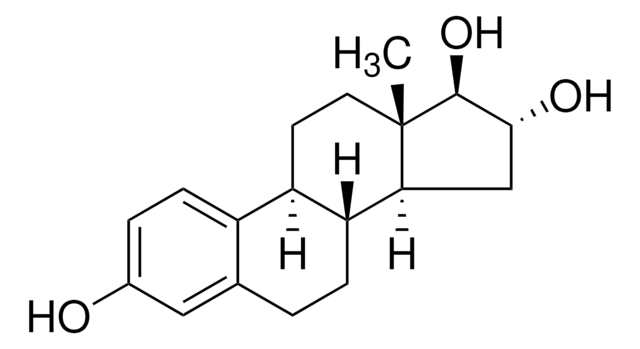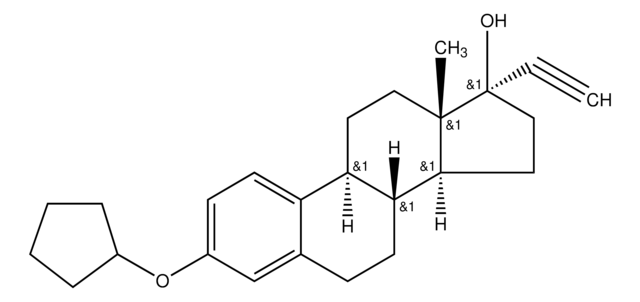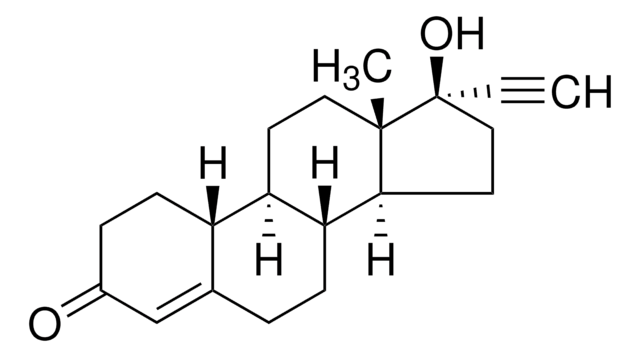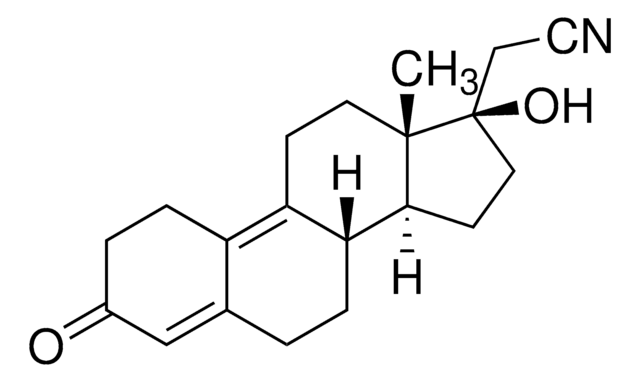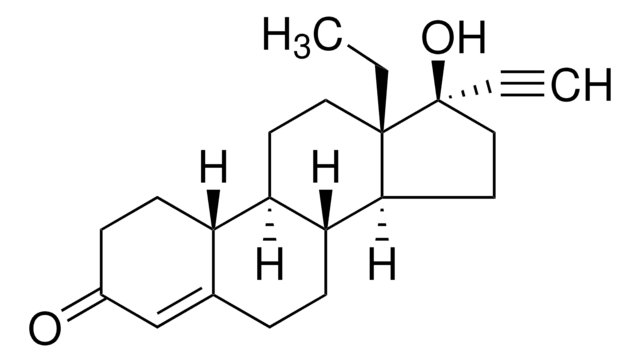E4876
17α-etinilestradiol
≥98%
Sinónimos:
17α-etinil-1,3,5(10)-estratrieno-3,17β-diol, 19-Nor-1,3,5(10),17α-pregnatrien-20-ino-3,17-diol, Etinilestradiol
About This Item
Productos recomendados
origen biológico
synthetic
esterilidad
non-sterile
Análisis
≥98%
formulario
powder
mp
182-183 °C (lit.)
solubilidad
ethanol: 50 mg/mL, clear, colorless to faintly yellow
Condiciones de envío
ambient
temp. de almacenamiento
room temp
cadena SMILES
[H][C@]12CC[C@@]3(C)[C@@]([H])(CC[C@@]3(O)C#C)[C@]1([H])CCc4cc(O)ccc24
InChI
1S/C20H24O2/c1-3-20(22)11-9-18-17-6-4-13-12-14(21)5-7-15(13)16(17)8-10-19(18,20)2/h1,5,7,12,16-18,21-22H,4,6,8-11H2,2H3/t16-,17-,18+,19+,20+/m1/s1
Clave InChI
BFPYWIDHMRZLRN-SLHNCBLASA-N
Información sobre el gen
human ... ESR1(2099)
rat ... Afp(24177) , Esr1(24890) , Shbg(24775)
¿Está buscando productos similares? Visita Guía de comparación de productos
Descripción general
Aplicación
Acciones bioquímicas o fisiológicas
Palabra de señalización
Danger
Frases de peligro
Consejos de prudencia
Clasificaciones de peligro
Acute Tox. 4 Oral - Aquatic Chronic 1 - Carc. 2 - Repr. 1A
Código de clase de almacenamiento
6.1C - Combustible acute toxic Cat.3 / toxic compounds or compounds which causing chronic effects
Clase de riesgo para el agua (WGK)
WGK 3
Equipo de protección personal
Eyeshields, Gloves, type P3 (EN 143) respirator cartridges
Certificados de análisis (COA)
Busque Certificados de análisis (COA) introduciendo el número de lote del producto. Los números de lote se encuentran en la etiqueta del producto después de las palabras «Lot» o «Batch»
¿Ya tiene este producto?
Encuentre la documentación para los productos que ha comprado recientemente en la Biblioteca de documentos.
Los clientes también vieron
Nuestro equipo de científicos tiene experiencia en todas las áreas de investigación: Ciencias de la vida, Ciencia de los materiales, Síntesis química, Cromatografía, Analítica y muchas otras.
Póngase en contacto con el Servicio técnico

